- Home
- Alison Weir
The Lady in the Tower: The Fall of Anne Boleyn Page 2
The Lady in the Tower: The Fall of Anne Boleyn Read online
Page 2
Halfway through the jousts a message was passed to Henry VIII, and suddenly, to everyone’s astonishment, especially the Queen’s, “the King departed to Westminster, having not above six persons with him,”8 leaving Anne to preside alone over what remained of the tournament. “Of which sudden departing, many men mused, but most chiefly the Queen.”9 She must have felt bewildered and fearful at the very least, because for some days now, the King had been distant or simmering with rage, and she had very good reasons to suspect that something ominous had happened—and that it concerned herself.
She was the Queen of England, and she should have been in an invincible position, yet she was painfully aware that she had disappointed Henry in the most important thing that mattered. She could not have failed to realize that his long-cherished passion for her had died and that his amorous interest now had another focus, but she clearly also knew that there was more to this present situation than mere infidelity. For months now the court had been abuzz with speculation that the King might take another wife. But that was not all.
A week before the tournament, Anne’s brother—one of the most powerful men at court—had been publicly slighted. That could have been explained in a number of ways, but many saw it as a slur upon herself. Since then, her father, a member of the King’s Council and privy to state secrets, who could have told her much that would frighten her, may have said something that gave her cause for alarm. She had perhaps guessed that members of her household were being covertly and systematically questioned. How she found out is a matter for speculation, but there can be no doubt that she knew something was going on. Just four days earlier she had sought out her chaplain and begged him to look to the care of her daughter should anything happen to her, the Queen. Plainly, she was aware of some undefined, impending danger.
She knew too that, only yesterday, her tongue, never very guarded, had run away with her and that she had spoken rashly, even treasonously, overstepping the conventional bounds of courtly banter between queen and servant, man and woman, and also that her words had been overheard. She was fretting about that, and had gone so far as to take steps to protect her good name. But it was too late. Others were putting their own construction on what she had said, and it was damning.
Anne seems to have feared that the King had been told of her compromising words. On the day—or the morning—before the tournament, she had made a dramatic, emotional appeal to him, only to be angrily rebuffed. Then late that evening, come the startling announcement that a planned—and important—royal journey had been postponed.
The signs had not been good, but the exact nature of the forces that menaced Anne was almost certainly a mystery to her. So she surely could not have predicted, when the King got up and walked out of the royal stand on that portentous May Day, it would be the last time she’d ever set eyes on him, and that she herself and those gallant contestants in the jousts were about to be annihilated in one of the most astonishing and brutal coups in English history.
CHAPTER 1
Occurrences That Presaged Evil
Three months earlier, on the morning of January 29, 1536,1 in the Queen’s apartments at Greenwich Palace, Anne Boleyn, who was Henry VIII’s second wife, had aborted—“with much peril of her life”2—a stillborn fetus “that had the appearance of a male child of fifteen weeks growth.”3 The Imperial ambassador, Eustache Chapuys, called it “an abortion which seemed to be a male child which she had not borne three-and-a-half months,”4 while Sander refers to it as “a shapeless mass of flesh.” The infant must therefore have been conceived around October 17.
This was Anne’s fourth pregnancy, and the only living child she had so far produced was a girl, Elizabeth, born on September 7, 1533; the arrival of a daughter had been a cataclysmic disappointment, for at that time it was unthinkable that a woman might rule successfully, as Elizabeth later did, and the King had long been desperate for a son to succeed him on the throne. Such a blessing would also have been a sign from God that he had been right to put away his first wife and marry Anne. Now, to the King’s “great distress,”5 that son had been born dead. It seemed an omen. She had, famously, “miscarried of her savior.”6
Henry had donned black that day, out of respect for his first wife, Katherine of Aragon, whose body was being buried in Peterborough Abbey with all the honors due to the Dowager Princess of Wales, for she was the widow of his brother Arthur Tudor, Prince of Wales. Having had his own marriage to her declared null and void in 1533, on the grounds that he could never lawfully have been wed to his brother’s wife, Henry would not now acknowledge her to have been Queen of England. Nevertheless, he observed the day of her burial with “solemn obsequies, with all his servants and himself attending them dressed in mourning.”7 He did not anticipate that, before the day was out, he would be mourning the loss of his son with “great disappointment and sorrow.”8
Henry VIII’s need for a male heir had become increasingly urgent in the twenty-seven years that had passed since 1509, when he married Katherine.9 Of her six pregnancies, there was only one surviving child, Mary. By 1526 the King had fallen headily in love with Katherine’s maid-of-honor, Anne Boleyn, and after six years of waiting in vain for the Pope to grant the annulment of his marriage that he so passionately desired, so he could make Anne his wife, he defied the Catholic Church, severed the English Church from Rome, and had the sympathetic Thomas Cranmer, his newly appointed Archbishop of Canterbury, declare his union with the virtuous Katherine invalid. All this he did in order to marry Anne and beget a son on her.
It had not been the happiest marriage. The roseate view of Anne’s apologist, George Wyatt reads touchingly: “They lived and loved, tokens of increasing love perpetually increasing between them. Her mind brought him forth the rich treasures of love of piety, love of truth, love of learning; her body yielded him the fruits of marriage, inestimable pledges of her faith and loyal love.” Yet while some of this is true, in the three years since their secret wedding in a turret room in Whitehall Palace, Henry VIII had not shown himself to be the kindest of husbands.
In marrying Anne for love, he had defied the convention that kings wed for political and dynastic reasons. The only precedent was the example of his grandfather, Edward IV, who in 1464 had taken to wife Elizabeth Wydeville, the object of his amorous interest, after she refused to sleep with him. But this left Anne vulnerable, because the foundation of her influence rested only on the King’s mercurial affections.10
His “blind and wretched passion”11 had rapidly subsided, and from the time of Anne’s first pregnancy, following true to previous form, he had taken mistresses, telling her to “shut her eyes and endure as more worthy persons had done”—a cruel and humiliating comparison with the forbearing and dignified Katherine of Aragon—and that “she ought to know that he could at any time lower her as much as he had raised her.”12 And this to the woman whom he had frenziedly pursued for at least seven years, and for whom he had risked excommunication and war; the woman who had been the great love of his life and was the mother of his heir.
“The King cannot leave her for an hour,” Chapuys had written of Anne in 1532. “He accompanies her everywhere,” a Venetian envoy had recorded at that time,13 and was so amorous of her that he gladly fulfilled all her desires and “preferred all that were of [her] blood.”14 Similarly, a French ambassador, Jean du Bellay, had reported that the King’s passion was such that only God could abate his madness. That was hardly surprising, since the evidence suggests he did not sleep with Anne for six or seven frustrating years. It has been suggested that it was Henry who, having enjoyed a sexual relationship with Anne during the early stages of their affair, resolved to abstain as soon as he had decided upon making her his wife, since the scandal of an unplanned pregnancy would have ruined all hope of the Pope granting an annulment.15
The theory that the couple were lovers before 1528 rests on the wording of the papal bull for which the King applied that year. Because Anne’s sister Mary had once been his
mistress, he needed—in the event of his marriage to Katherine being dissolved—a dispensation to marry within the prohibited degrees of affinity, which was duly granted; and he also asked for permission to marry a woman with whom he had already had intercourse.16 He must have been referring throughout to Anne, whom he had long since determined to make his wife. But the wording of this bull does not necessarily imply that he had already slept with her: he was looking to the future and hopefully to making Anne his mistress in anticipation of their marriage. He was covering every contingency. Moreover, his seventeen surviving love letters to Anne strongly suggest that the more traditional assumption is likely correct, and that it was she who kept him at arm’s length for all that time, only to yield when marriage was within her sights.
Despite all the years of waiting and longing, there had been “much coldness and grumbling” between the couple since their marriage,17 for Anne, once won, had perhaps been a disappointment. She was not born to be a queen, nor educated to that end. She found it difficult, if not impossible, to make the transition from a mistress with the upper hand to a compliant and deferential wife, which was what the King, once married, now expected of her. Years of frustration, of holding Henry off while waiting for a favorable papal decision that never came, had taken their toll on her as well as the King, and made her haughty, overbearing, shrewish, and volatile, qualities that were then frowned upon in wives, who were expected to be meek and submissive, not defiant and outspoken. And Henry VIII was nothing if not a conventional husband.18 George Wyatt observed that, rather than upbraiding him for his infidelities, Anne would have done better to follow “the general liberty and custom” of the age by suffering in dignified silence.
These days, Anne was no longer the captivating twenty-something who had first caught the King’s eye, but (according to Chapuys) a “thin old woman” of thirty-five, a description borne out by a portrait of her done by an unknown artist around this time, which once hung at Nidd Hall in Yorkshire; one courtier even thought her “extremely ugly.”19 She was unpopular, and she had made many enemies in the court and the royal household through her overbearing behavior and offensive remarks.
Nor had her much-vaunted virtue, employed as a tactical weapon in holding off the King’s advances, been genuine. We may set aside Sander’s malicious assertion that Anne’s father sent her to France at the age of thirteen after finding her in bed with his butler and his chaplain, but she did go to the notoriously licentious French court at an impressionable age. “Rarely, or ever, did any maid or wife leave that court chaste,” observed the sixteenth-century French historian, the Seigneur de Brantome, and in 1533, the year of Anne’s marriage to Henry VIII, King Francis I of France confided to Thomas Howard, Duke of Norfolk, her uncle, “how little virtuously [she] had always lived.”20 Given the promiscuity of Anne’s brother George and her sister Mary, and the suspect reputation of their mother, Elizabeth Howard, as well as the fact that their father was ready to profit by his daughters’ liaisons with the King, it would be unsurprising if Anne herself had remained chaste until her marriage at the age of about thirty-two. In 1536 a disillusioned Henry told Chapuys in confidence that his wife had been “corrupted” in France, and that he had only realized this after their marriage.21
Anne, however, would stand up one day in court and protest that she had maintained her honor and her chastity all her life long, “as much as ever queen did.”22 But that chastity may have been merely technical, for there are many ways of giving and receiving sexual pleasure without actual penetration. Henry VIII, perhaps not the most imaginative of men when it came to sex, and evidently a bit of a prude, was clearly shocked to discover that Anne already had some experience before he slept with her, and his disenchantment had probably been festering ever since.23 It would explain the rapid erosion of his great passion for her, his straying from her bed within months of their marriage, and his keeping her under constant scrutiny. He believed she had lied to him, thought her capable of sustained duplicity, and may also have been suspicious of her naturally coquettish behavior with the men in her circle.
On the surface, however, he had maintained solidarity with Anne. He could not afford to lose face after his long and controversial struggle to make her his wife, nor would he admit he had been wrong in marrying her. He took the unprecedented step of having her crowned with St. Edward’s crown as if she were a queen regnant, crushed opposition to her elevation, slept with her often enough to conceive four children in three years, gave her rich gifts, looked after the interests of her family, and in 1534 named her regent and “absolute governess of her children and kingdom” in the event of his death. That year he pushed through an Act of Parliament that settled the royal succession on his children by “his most dear and entirely beloved wife, Queen Anne,” and made it high treason to slander or deny “the lawful matrimony” between them.24
The conventional expressions of devotion in the Act of Succession concealed the fact that Henry was already “tired to satiety” of his wife.25 The French ambassador, Antoine de Castelnau, Bishop of Tarbes, reported in October 1535 that “his regard for the Queen is less than it was and diminishes every day.”26 According to a French poem written by the diplomat Lancelot de Carles in June 1536, “the King daily cooled in his affection.” He was seen to be unfaithful, suspicious, and increasingly distant toward Anne, and her influence had been correspondingly eroded.27 Nevertheless, every quarrel or estrangement between them had so far ended in reconciliation, leading many, even Chapuys, to conclude that the King still remained to a degree in thrall to his wife. “When the Lady wants something, there is no one who dares contradict her, not even the King himself, because when he does not want to do what she wishes, she behaves like someone in a frenzy.”28
The Queen’s subsequent pregnancies had failed to produce the longed-for son. After the birth of the Princess Elizabeth in September 1533, Chapuys had written of the King, “God has forgotten him entirely.” Anne quickly conceived again, but, in the summer of 1534, had borne probably a stillborn son at full term. So humiliating was this loss that no announcement of the birth was made, and the veil of secrecy surrounding the tragedy ensured that not even the sex of the infant was recorded, although we may infer from Chapuys’s reference in 1536 to Anne’s “utter inability to bear male children” that it was a boy.29 In the autumn of 1534, Anne thought she was pregnant again, but her hopes were premature. “The Lady is not to have a child after all,” observed Chapuys gleefully. He would never refer to Anne as queen; for him, Katherine, the aunt of his master, the Holy Roman Emperor Charles V, was Henry’s rightful consort, and he could only regard Anne Boleyn as “the Lady” or “the Concubine,” or even “the English Messalina or Agrippina.”30
Anne’s third pregnancy ended in another stillbirth around June 1535.31 To Henry, who was perhaps already despairing of her bearing him a son,32 it might have seemed that she was merely repeating the disastrous pattern of Katherine of Aragon’s obstetric history: before reaching the menopause at thirty-eight, Katherine had borne six children—three of them sons—in eight years, yet the only one to survive early infancy was Mary, born in 1516. Now, after four pregnancies, Anne too had just the one surviving daughter.
Daughters were of no use to the King. It was seen as against the laws of God and Nature for a woman to hold dominion over men, and so far England’s only example of a female ruler had been the Empress Matilda, who briefly emerged triumphant from her civil war with King Stephen in 1141 and seized London. Yet so haughty and autocratic was she that the citizens speedily sent her packing, never to regain control of the kingdom. The whole disastrous episode merely served to underline the prevailing male view that women were not fit to rule. England had yet to experience an Elizabeth or a Victoria, so there was no evidence that could overturn that thinking. Thus, even though he was the father of a daughter, Henry VIII had felt justified in claiming that his marriage to Katherine was invalid because the divine penalty for marrying his brother’s widow was child
lessness. Without a son, he was effectively childless.
This was not just a chauvinistic conceit, but a very pressing issue. A king such as Henry, who ruled as well as reigned, and led armies into battle, needed an heir. The Wars of the Roses, that prolonged dynastic conflict between the royal Houses of Lancaster and York, were still within living memory, and sixteenth-century perceptions of them were alarming, even if overstated. There were those who regarded the Tudors—who had ruled since 1485, when Henry’s father, Henry VII, had defeated Richard III, the last Plantagenet king—as a usurping dynasty, and there was no shortage of potential Yorkist (or “White Rose”) claimants to challenge the succession of Princess Elizabeth, should Henry die without a son. “The King was apprehensive that, after his own decease, civil wars would break out, and that the crown would again be transferred to the family of the White Rose if he left no heir behind him.”33 The specter of a bloody conflict loomed large in the King’s mind, and he had done his best to ruthlessly eradicate or neutralize anyone with pretensions to the throne. But there could be little doubt that, were he to die and leave no son to succeed him, the kingdom would soon descend into dynastic turmoil and even war.
Henry—and his contemporaries—must sincerely have wondered if, in withholding the blessing of a son, God was manifesting the same divine displeasure that had blighted the King’s first marriage, when it became clear to Henry that he had offended the Deity by marrying his brother’s widow. Now it seemed that he had offended again in some way, by marrying Anne.

 Richard III and the Princes in the Tower
Richard III and the Princes in the Tower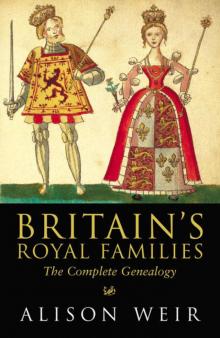 Britain's Royal Families: The Complete Genealogy
Britain's Royal Families: The Complete Genealogy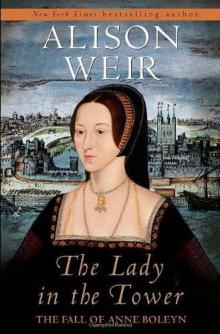 The Lady in the Tower: The Fall of Anne Boleyn
The Lady in the Tower: The Fall of Anne Boleyn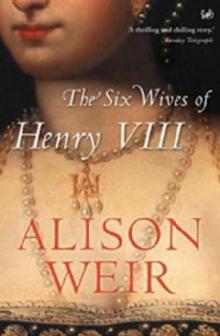 Six Wives of Henry VIII
Six Wives of Henry VIII Elizabeth of York: A Tudor Queen and Her World
Elizabeth of York: A Tudor Queen and Her World Captive Queen
Captive Queen Innocent Traitor
Innocent Traitor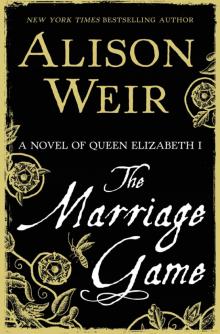 The Marriage Game
The Marriage Game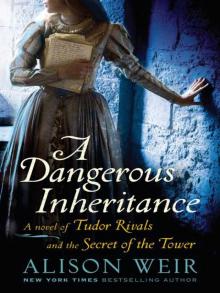 A Dangerous Inheritance
A Dangerous Inheritance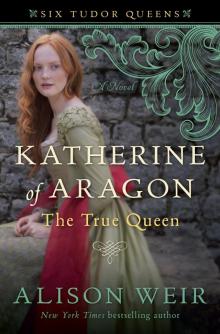 Katherine of Aragón: The True Queen
Katherine of Aragón: The True Queen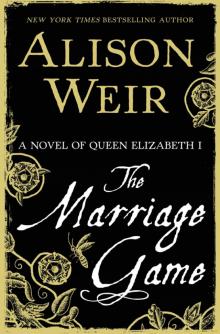 The Marriage Game: A Novel of Queen Elizabeth I
The Marriage Game: A Novel of Queen Elizabeth I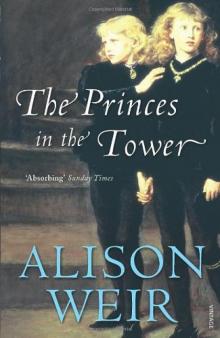 Princes in the Tower
Princes in the Tower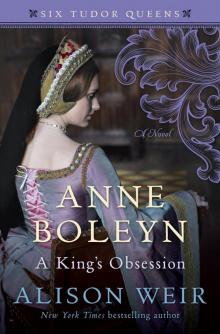 Anne Boleyn: A King's Obsession
Anne Boleyn: A King's Obsession Traitors of the Tower
Traitors of the Tower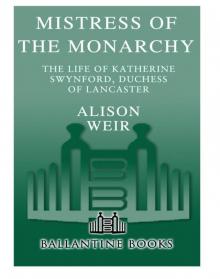 Mistress of the Monarchy: The Life of Katherine Swynford, Duchess of Lancaster
Mistress of the Monarchy: The Life of Katherine Swynford, Duchess of Lancaster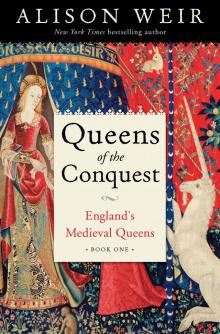 Queens of the Conquest: England’s Medieval Queens
Queens of the Conquest: England’s Medieval Queens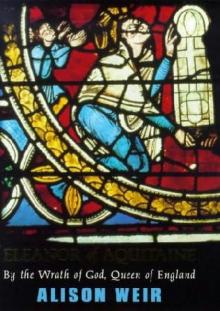 Eleanor of Aquitaine: A Life
Eleanor of Aquitaine: A Life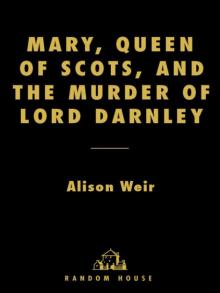 Mary, Queen of Scots, and the Murder of Lord Darnley
Mary, Queen of Scots, and the Murder of Lord Darnley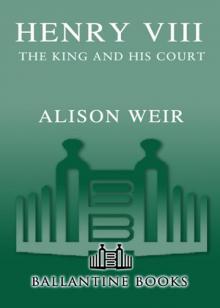 Henry VIII: The King and His Court
Henry VIII: The King and His Court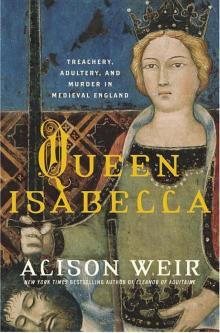 Queen Isabella: Treachery, Adultery, and Murder in Medieval England
Queen Isabella: Treachery, Adultery, and Murder in Medieval England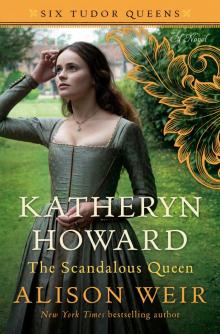 Katheryn Howard, the Scandalous Queen
Katheryn Howard, the Scandalous Queen Arthur- Prince of the Roses
Arthur- Prince of the Roses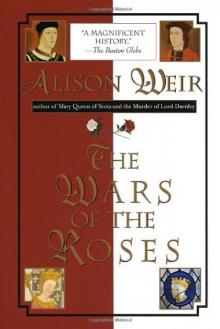 The Wars of the Roses
The Wars of the Roses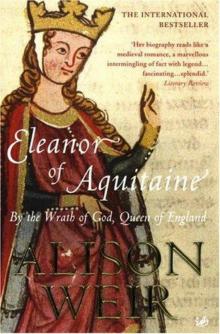 Eleanor of Aquitaine: By the Wrath of God, Queen of England
Eleanor of Aquitaine: By the Wrath of God, Queen of England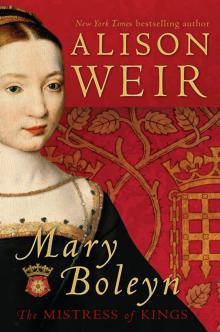 Mary Boleyn: The Great and Infamous Whore
Mary Boleyn: The Great and Infamous Whore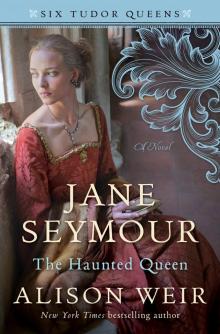 Jane Seymour: The Haunted Queen
Jane Seymour: The Haunted Queen Anna of Kleve, the Princess in the Portrait
Anna of Kleve, the Princess in the Portrait Lancaster and York: The Wars of the Roses
Lancaster and York: The Wars of the Roses The Grandmother's Tale
The Grandmother's Tale The Princess of Scotland (Six Tudor Queens #5.5)
The Princess of Scotland (Six Tudor Queens #5.5)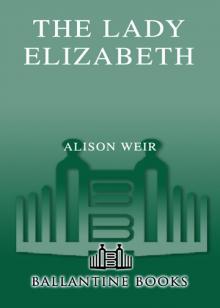 The Lady Elizabeth
The Lady Elizabeth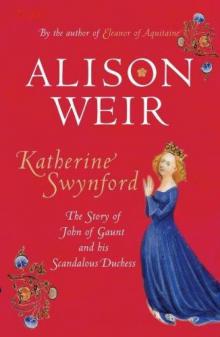 Katherine Swynford: The Story of John of Gaunt and His Scandalous Duchess
Katherine Swynford: The Story of John of Gaunt and His Scandalous Duchess The Curse of the Hungerfords
The Curse of the Hungerfords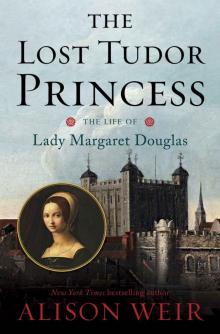 The Lost Tudor Princess: The Life of Lady Margaret Douglas
The Lost Tudor Princess: The Life of Lady Margaret Douglas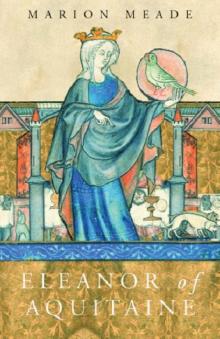 Eleanor of Aquitaine
Eleanor of Aquitaine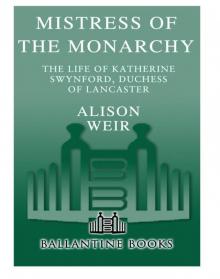 Mistress of the Monarchy
Mistress of the Monarchy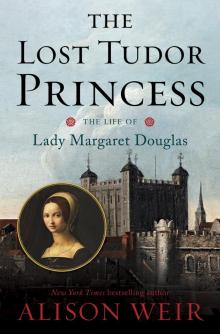 The Lost Tudor Princess
The Lost Tudor Princess Henry VIII
Henry VIII Anne Boleyn, a King's Obsession
Anne Boleyn, a King's Obsession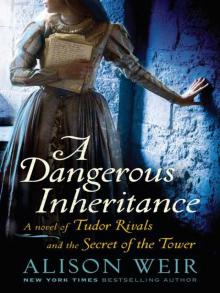 A Dangerous Inheritance: A Novel of Tudor Rivals and the Secret of the Tower
A Dangerous Inheritance: A Novel of Tudor Rivals and the Secret of the Tower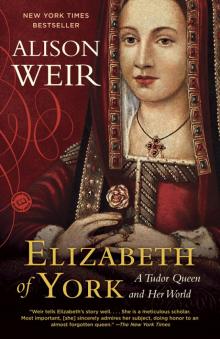 Elizabeth of York
Elizabeth of York Katherine of Aragon, the True Queen
Katherine of Aragon, the True Queen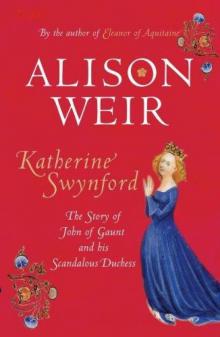 Katherine Swynford
Katherine Swynford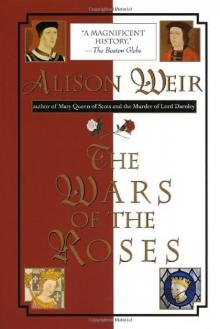 Wars of the Roses
Wars of the Roses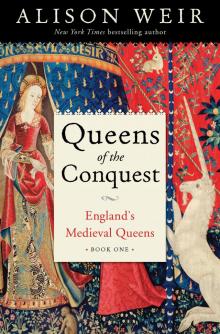 Queens of the Conquest
Queens of the Conquest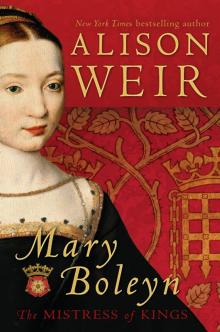 Mary Boleyn
Mary Boleyn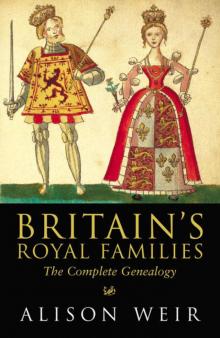 Britain's Royal Families
Britain's Royal Families The Tower Is Full of Ghosts Today
The Tower Is Full of Ghosts Today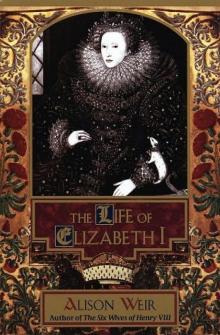 Life of Elizabeth I
Life of Elizabeth I Anne Boleyn A King's Obssession
Anne Boleyn A King's Obssession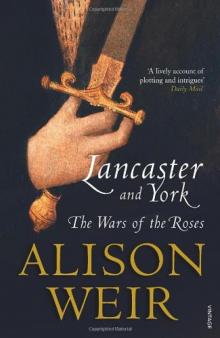 Lancaster and York
Lancaster and York Jane Seymour, the Haunted Queen
Jane Seymour, the Haunted Queen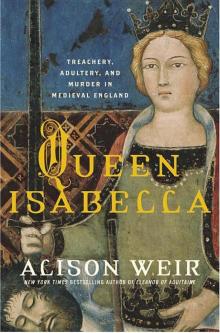 Queen Isabella
Queen Isabella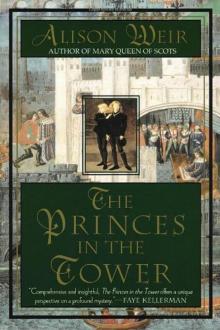 The princes in the tower
The princes in the tower